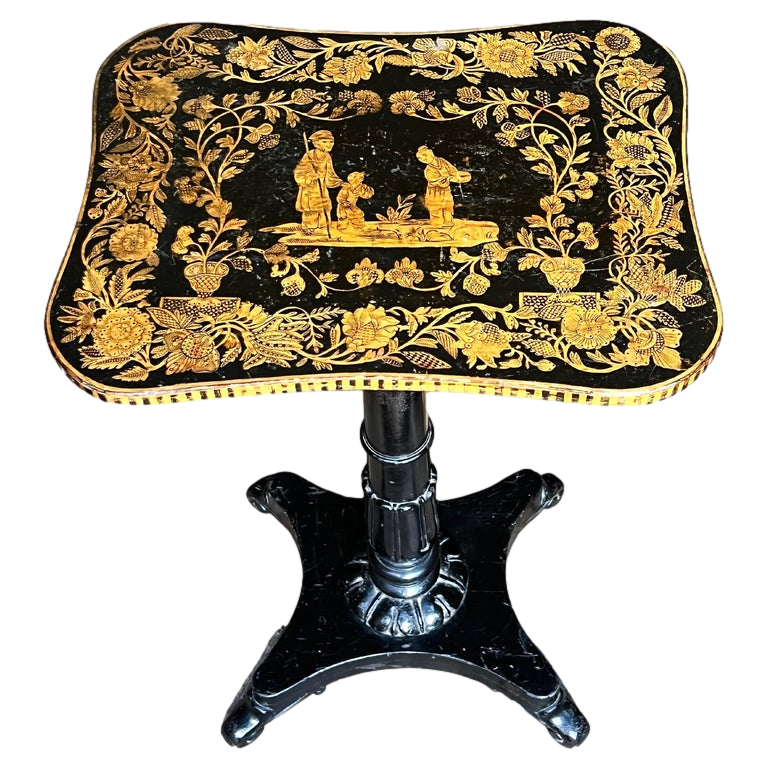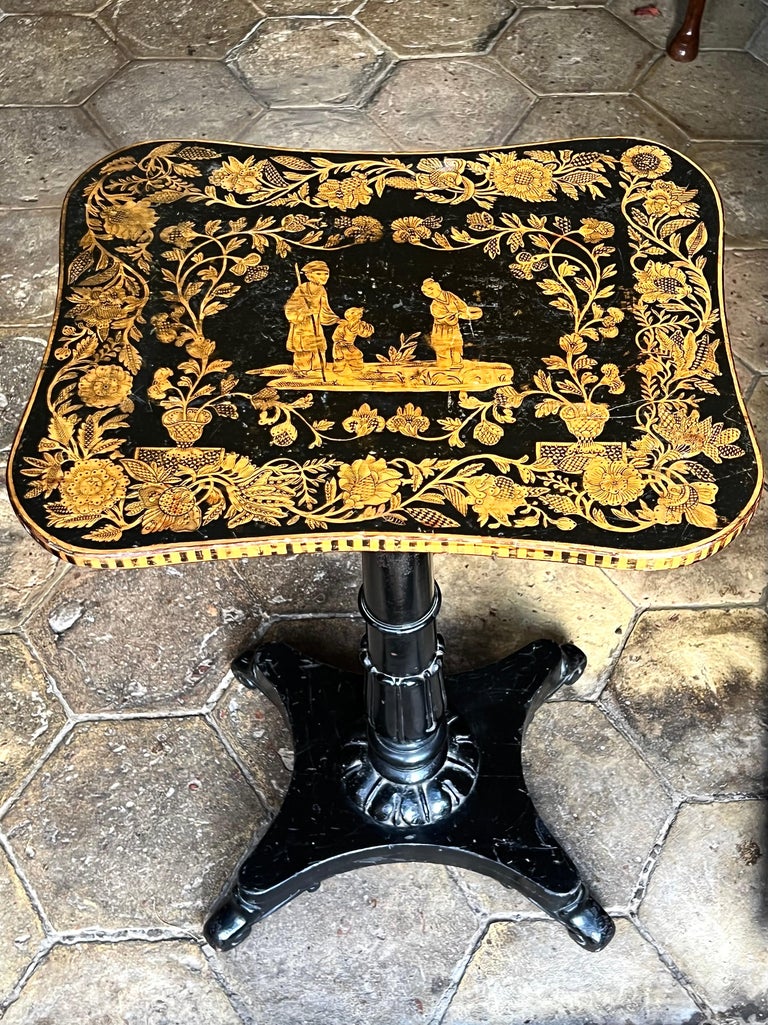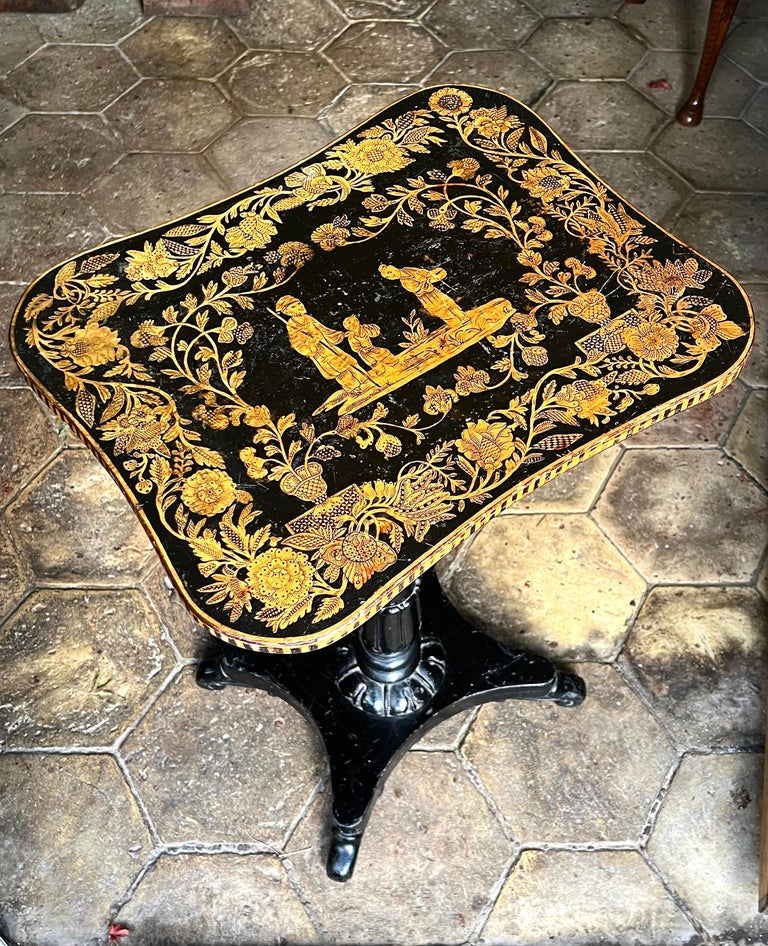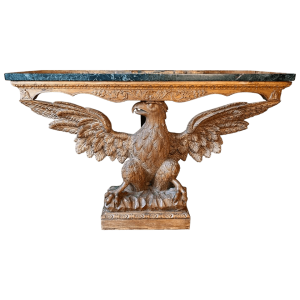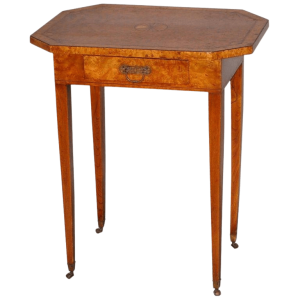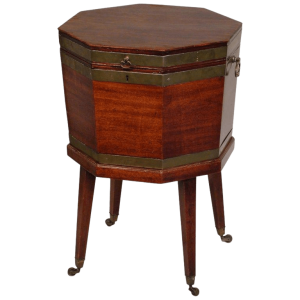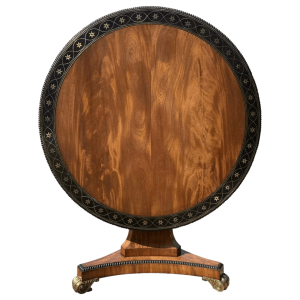Description
An English Regency-period chinoiserie penwork occasional table, circa 1815.
The unusual rectangular gentle-serpentine top profusely decorated and centred by a chinoiserie scene of a man, woman and child, flanked by two large urns from which (possibly mulberry) vines are emerging, the whole surrounded by fine complex floral decoration with a chequer-work border.
Raised on an ebonised base with elongated lotus on a concave quadruped base. A useful and attractive early-19th century table in lovely condition, in its original state. A chic antique.
Nb. Items decorated with penwork come in many shapes and sizes. The most common occur in the form of boxes and games tables with chequerboard tops, the less common in the form of small cabinets.
Penwork:
A form of decoration popular during the late-eighteenth and early-nineteenth centuries, and practised mostly by amateurs along with japanning, needlework and drawing etc, usually by talented aristocratic ladies. The craze was for orientalist designs and much penwork followed this pattern as well as with scenes from classical antiquity. Penwork was executed with fine quill pens and brushes showing charming, often naïve subjects reflecting the amateur nature of the artist. Chessboard tops are a common subject. Layers of varnish would have originally been applied for protection.
Penwork is considered very stylish and much favoured by top interior designers and collectors alike. Condition is important as penwork can be costly to restore.
In June 1810, bookseller Rudolf Ackermann, owner of The Repository of the Arts in the Strand, London, published the first known reference to penwork decoration in his periodical Repository of Arts referring to compositions with ”a black ground, in imitation of Indian ivory inlaid work.” He supplied all necessary materials and equipment for customers to undertake the art of penwork, which at the time was primarily performed by women of a higher social standing who had time to devote to creative pursuits.
References:
Rudolph Ackermann – Wikipedia
https://en.wikipedia.org/wiki/Rudolph_Ackermann
During the height of penwork popularity around 1820, the Prince Regent, George IV, had great influence over the decorative schemes present at the time, popularising chinoiserie decorations as seen in The Brighton Pavilion. Though penwork motifs could be procured from a variety of sources such as pattern books and other publications, many pieces were decorated by women working in their homes and therefore feature more unique decoration that may have been designed to match interiors, or even stemmed from their personal interest.



